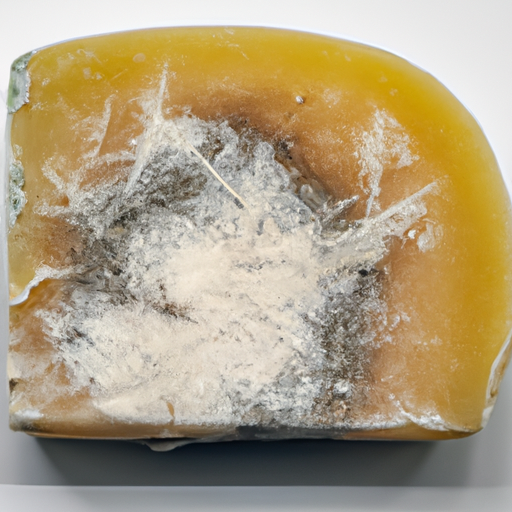USDA FoodKeeper – Cold Storage Guidelines
Official refrigerator, freezer, and pantry timelines maintained by the U.S. Department of Agriculture.
Visit USDA FoodKeeperAsiago cheese, with its rich flavor and versatile uses, can elevate any dish from a simple pasta to a gourmet cheese board. When stored unopened in the fridge, it keeps fresh for about 60 days, and even a bit beyond its expiry date, you can safely enjoy it for up to 14 days. Just remember, proper storage is key to maintaining its delightful taste!
30 most common foods with instant answers. Print it and stick it on your fridge—completely free! Want more? Upgrade to the complete guide with 70+ foods.
"According to USDA guidelines, unopened Asiago cheese can be stored in the refrigerator at 35-40°F and should be consumed within 2-4 months for best quality."


Fridge
34-40°F (1-4°C)
Keep in original packaging until ready to use. Store in cheese drawer or crisper.
60 days
180 days
Unusual mold growth, off odor, slimy texture
Grating, cooking, cheese boards
Parmesan, Romano, aged hard cheese
The expiration date on Asiago cheese indicates the date until which the cheese is expected to remain safe to consume. However, even after the expiration date, Asiago cheese may still be safe to eat if it has been properly stored and shows no signs of spoilage. The 'best quality by' date refers to the period during which Asiago cheese is expected to retain optimal flavor and texture. Consuming Asiago cheese after this date may result in a decline in quality but not necessarily in safety, as long as there are no signs of spoilage.
To determine if unopened Asiago cheese has gone bad, look for any visible mold growth, discoloration, or an off smell resembling ammonia. Check the texture for any sliminess or excessive hardness. If any of these signs are present, it's best to discard the cheese to avoid potential foodborne illness.
Asiago cheese, like other dairy products, can pose a risk of foodborne illness if not stored properly. Contaminated Asiago cheese can lead to illnesses like listeriosis, caused by the Listeria monocytogenes bacteria. It's important to store Asiago cheese at the proper temperature to prevent the growth of harmful bacteria.
To ensure the freshness and safety of unopened Asiago cheese, store it in the refrigerator at a temperature between 35-40°F (1.6-4.4°C). Keep the cheese wrapped tightly in its original packaging or reseal it in wax paper or parchment paper to prevent it from drying out. Avoid storing Asiago cheese near strong-smelling foods as it can absorb odors easily. If you notice any signs of mold, slime, or an off smell on the cheese, discard it to prevent any risk of foodborne illness.
Asiago cheese is a popular Italian cheese that has been produced for centuries in the Asiago Plateau region of Italy. It is a protected designation of origin (PDO) cheese, meaning that authentic Asiago cheese can only be produced in certain regions of Italy using specific methods. There are two types of Asiago cheese: Asiago d'allevo, a semi-cooked cheese with a mild flavor, and Asiago pressato, a younger, softer cheese with a more delicate taste. Asiago cheese is commonly used in Italian cuisine, especially in dishes like risotto, pasta, and salads.
Asiago Cheese Unopened can be safely stored in the fridge for up to 60 days before opening. Make sure to check the 'use by' date on the packaging for the most accurate guidance.
If Asiago Cheese Unopened has been at room temperature for a few hours, it should still be safe to consume as long as it shows no signs of spoilage like an off smell or unusual texture. However, to maintain quality and reduce any risk, it's advisable to refrigerate it promptly.
The type of container can impact the shelf life of Asiago Cheese Unopened. Airtight containers can help prolong the freshness and prevent contamination. If transferring Asiago Cheese Unopened to a different container, ensure it is clean and food-safe.
Yes, Asiago Cheese Unopened can be frozen to extend its shelf life. Freezing may alter the texture slightly, but it will remain safe to eat. Wrap the cheese tightly in freezer-safe packaging to prevent freezer burn and thaw it in the refrigerator for best results.
Cooking Asiago Cheese Unopened can alter its expiration date. Once cooked, it is no longer considered unopened cheese and should be consumed within a few days if refrigerated. Pay attention to any additional ingredients used in the cooking process that may shorten the shelf life.
Asiago Cheese Unopened generally lasts longer in colder temperatures, such as winter, compared to warmer temperatures like summer. Store it in the coldest part of the fridge to maintain its quality for an extended period, regardless of the season.
When transporting Asiago Cheese Unopened for a few hours, use a cooler bag with ice packs to keep it at a safe temperature. Avoid leaving it in a hot car or under direct sunlight. Once you reach your destination, promptly refrigerate the cheese to maintain its freshness.
30 most common foods with instant answers. Print it and stick it on your fridge—completely free! Want more? Upgrade to the complete guide with 70+ foods.
Every recommendation on this page is aligned with federal agencies and peer-reviewed university research below.
Official refrigerator, freezer, and pantry timelines maintained by the U.S. Department of Agriculture.
Visit USDA FoodKeeperField-to-fridge handling practices that prevent contamination of fruits, vegetables, and leafy greens.
Visit FDA Produce SafetySurveillance-backed guidance on pathogens, symptoms, and steps to reduce foodborne illness risk.
Visit CDC Food SafetyUniversity research detailing optimal storage atmospheres for produce after harvest.
Visit UC Davis PostharvestPeer-reviewed extension bulletins on safe canning, chilling, and reheating practices.
Visit Penn State ExtensionNeed deeper reading? Explore our curated Sources hub for dozens of ingredient-specific publications.
Scan your food directly and get instant safety info using our AI-powered camera feature.
We have recipes that can help you safely use asiago cheese unopened past its expiration date!
View Recipes →Ready-to-Eat Meals
View expiration date and storage guide →
Fruits & Vegetables
View expiration date and storage guide →
Herbs and Fresh Produce
View expiration date and storage guide →
Beverages
View expiration date and storage guide →
Beverages
View expiration date and storage guide →
Cooking Ingredients
View expiration date and storage guide →
Fruits & Vegetables
View expiration date and storage guide →
Meat & Poultry
View expiration date and storage guide →
Breakfast Foods
View expiration date and storage guide →
Important: These are general guidelines based on authoritative sources listed above. Always use your best judgment and when in doubt, throw it out. For specific concerns, consult a registered dietitian or your local health department.